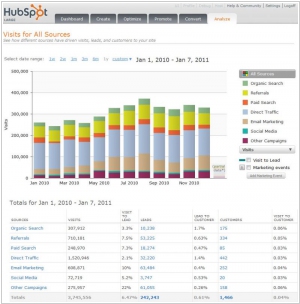Bitrix24 vs HubSpot
August 20, 2023 | Author: Adam Levine
13
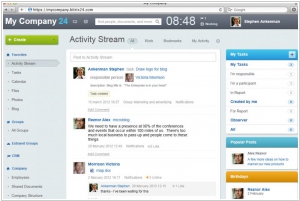
Russian business management service that creates a united work space for your company and enables collaboration to make everyone more effective. Includes activity streams, tasks, file storage (with version control), calendar, photogalleries, instant messager, extranet, CRM, workflow builder, time tracker, profiles, reports, mobile version
Bitrix24 and HubSpot are both popular software platforms for businesses, but they have distinct differences in their features and target audiences. Bitrix24 is a comprehensive business management platform that offers a wide range of tools, including CRM, project management, communication, and collaboration. It provides features such as task management, document sharing, social intranet, and customer relationship management, making it suitable for organizations seeking an all-in-one solution for business processes and team collaboration.
On the other hand, HubSpot is primarily focused on inbound marketing and sales automation. It offers a suite of tools for managing marketing campaigns, lead generation, customer relationship management, and sales pipelines. HubSpot provides features such as email marketing, lead nurturing, analytics, and sales automation, making it a suitable choice for organizations looking to streamline their marketing and sales processes and nurture customer relationships.
See also: Top 10 Enterprise Social Software
On the other hand, HubSpot is primarily focused on inbound marketing and sales automation. It offers a suite of tools for managing marketing campaigns, lead generation, customer relationship management, and sales pipelines. HubSpot provides features such as email marketing, lead nurturing, analytics, and sales automation, making it a suitable choice for organizations looking to streamline their marketing and sales processes and nurture customer relationships.
See also: Top 10 Enterprise Social Software
Bitrix24 vs HubSpot in our news:
2023. HubSpot unveils strategy to integrate AI across the platform
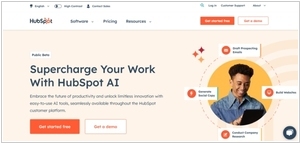
HubSpot, the marketing and CRM platform, has unveiled its comprehensive AI strategy known as HubSpot AI. While the incorporation of AI elements has been an ongoing effort for HubSpot and other enterprise SaaS vendors, the advent of technologies like ChatGPT has prompted HubSpot to adopt a more extensive approach while retaining earlier features. The CRM database stores valuable company data, enabling users to gain insights into customer profiles, encompassing basic information, purchase history, customer service interactions, and more. HubSpot AI encompasses a four-pronged strategy, starting with content assistants that assist users in generating various content types across the platform. Additionally, AI agents, currently in different development stages, aim to automate customer service tasks and answer queries. The third component, AI Insights, provides predictive analytics, such as identifying customers likely to churn or make a purchase, a capability integrated into the platform over time.
2020. HubSpot’s new end-to-end sales hub aims to simplify CRM for mid-market customers
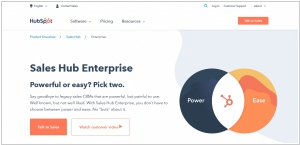
HubSpot, renowned for its role in shaping the concept of inbound marketing, has unveiled the HubSpot Sales Hub Enterprise. While the company has been providing a CRM tool for five years, which has successfully addressed the usability concerns of salespeople, the new offering aims to deliver a comprehensive approach that caters to the needs of not only sales professionals but also management and system administrators. HubSpot recognizes that larger players in the industry, such as Adobe, Salesforce, and SAP, typically acquire various components of the technology stack and integrate them into their solutions, or customers themselves piece together different elements. In contrast, HubSpot believes that developing a unified, integrated solution in-house will naturally result in a more user-friendly experience.
2020. HubSpot unveils new content management system for marketers
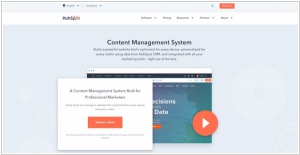
HubSpot, a renowned inbound marketing firm, has introduced a dedicated content management system (CMS) specifically designed to simplify the process of adding and updating content for marketing professionals. While content management has always been a fundamental aspect of HubSpot's offerings, this new CMS has been developed from scratch with marketers in mind. It provides developers with the flexibility to use their preferred programming languages while leveraging the modular structure of the HubSpot CMS. Simultaneously, the user-friendly interface empowers marketers to make frequent changes necessary for modern websites.
2018. HubSpot added customer service tools to its marketing platform
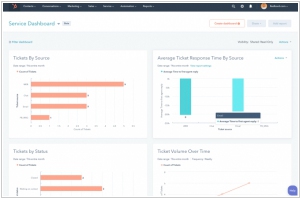
HubSpot is venturing beyond sales and marketing by officially introducing its Service Hub, a comprehensive solution for managing customer service. This expansion includes an all-in-one inbox for organizing all customer communications, a bot-builder to automate certain customer interactions, features for developing a company knowledge base (which can be utilized by the bot-builder), survey creation tools, and a dashboard for monitoring the performance of your service team. Service Hub is seamlessly integrated with HubSpot's existing products, enabling businesses to track customer interactions across sales, marketing, and support.
2017. HubSpot unveiled Conversations
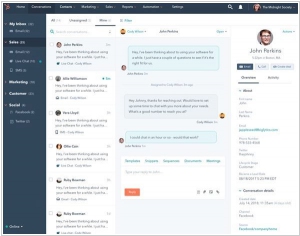
CRM, marketing, sales, and customer experience provider HubSpot has introduced a range of product updates, including notable integrations with Facebook for advertising purposes, Shopify for ecommerce functionalities, and the introduction of a new tool called "Conversations." The Conversations tool, facilitated by chatbots, consolidates customer messages into a single inbox, representing the evolution of HubSpot's live chat platform. This unified messaging system becomes crucial during significant transitions, such as the handoff from sales to support. Key features of Conversations include seamless integration with HubSpot CRM and the ability to create chatbots, leveraging the technology obtained from HubSpot's recent acquisition of the chatbot platform, Motion AI. These updates aim to enhance customer interactions and streamline communication processes within the HubSpot platform.
2017. Marketing platform HubSpot acquires AI startup Kemvi
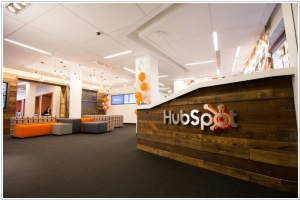
Inbound marketing and sales platform HubSpot has made an acquisition of Kemvi, a startup that utilizes artificial intelligence and machine learning to assist sales teams. A short while ago, Kemvi introduced DeepGraph, a product that examines public data to enable salespeople in identifying the optimal time (such as after a job transition or the release of an article) to connect with potential customers. Additionally, it takes proactive measures to verify leads. HubSpot was actively seeking innovative ways to incorporate AI technology into its platform as a means to combat competitors. The acquisition of Kemvi was especially attractive to HubSpot due to its ability to address a genuine requirement among salespeople.
2015. HubSpot launches own CRM system
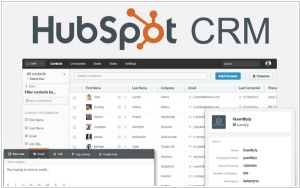
HubSpot, a renowned company recognized for its marketing tools, has officially launched its CRM product, moving it out of the beta phase. The CRM tool is available for free, while HubSpot's sales "acceleration" tool, Sidekick, is priced at $50 per seat per month. HubSpot describes the CRM tool as designed to assist sales representatives in minimizing the tedious aspects of data entry and interaction management. The tool automatically captures data from the sales process and organizes it in a chronological format. This strategy of providing free software to companies and subsequently upselling their IT departments has proven successful for software companies like Dropbox and Box. Although there are still costs associated with the sales process, having products integrated into more businesses helps reduce certain barriers.
2014. Marketing giant HubSpot files $100M IPO
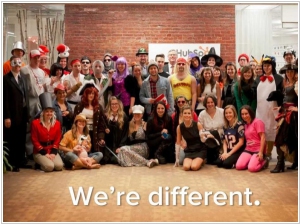
HubSpot, a leading provider of marketing automation software, has recently filed for an Initial Public Offering (IPO) with the aim of raising up to $100 million. This move follows a similar path taken by its competitor Marketo, which went public the previous year. Notably, other rivals such as Eloqua and ExactTarget chose to be acquired by larger software companies—Eloqua was acquired by Oracle for $871 million in late 2012, while ExactTarget was acquired by Salesforce.com for a whopping $2.5 billion just six months later. It's worth mentioning that both Salesforce and Google have also invested in HubSpot, further highlighting the company's industry significance and appeal.
2014. Bitrix24 launches inter-company social messenger
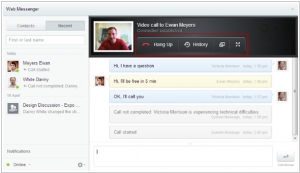
The social collaboration tool Bitrix24 is introducing a new, complimentary instant messenger called Bitrix24.Network. This messenger facilitates seamless communication and collaboration among users from various companies, similar to the concept of "Skype for business." Users can establish free collaboration workspaces with both private and group chats, as well as engage in audio and video calls. Additionally, Bitrix24.Network will soon incorporate features such as file sharing, online document editing, and other tools that are already available in Bitrix24. Furthermore, Bitrix24 has incorporated an internal email server, powered by Yandex Mail, enabling the creation of mailboxes under the domain @bitrix24.com (or any custom domain) for each employee, with the option to add business mail to the portal menu.
2013. Bitrix24 adds VoIP-webphone, live CRM stream, collaborative folders

Bitrix24, the versatile social intranet service, is launching its latest version. This new version introduces the ability to make customer calls directly from the system's web interface using a webRTC-softphone. These calls are recorded and logged in the customer profiles, and you also have the option to store call records. Bitrix24 utilizes Zingaya as its VoIP provider, offering even lower VoIP fees compared to Skype. Previously, Bitrix only allowed internal calls between colleagues within the company and relied on other desktop IP telephony applications like Skype, Lync, or others for external calls. The second new feature is the introduction of a separate activity stream in the CRM section. This stream enables real-time tracking of deals, salesperson activities, and customer interactions. Additionally, Bitrix24 Drive, the app that facilitates file synchronization between local machines and the intranet, has added a new collaboration feature. Previously, it allowed you to store all documents and files in the cloud, edit them offline, and sync changes once you connect to the internet. Now, this functionality extends to shared folders as well, enhancing collaboration within the platform.

